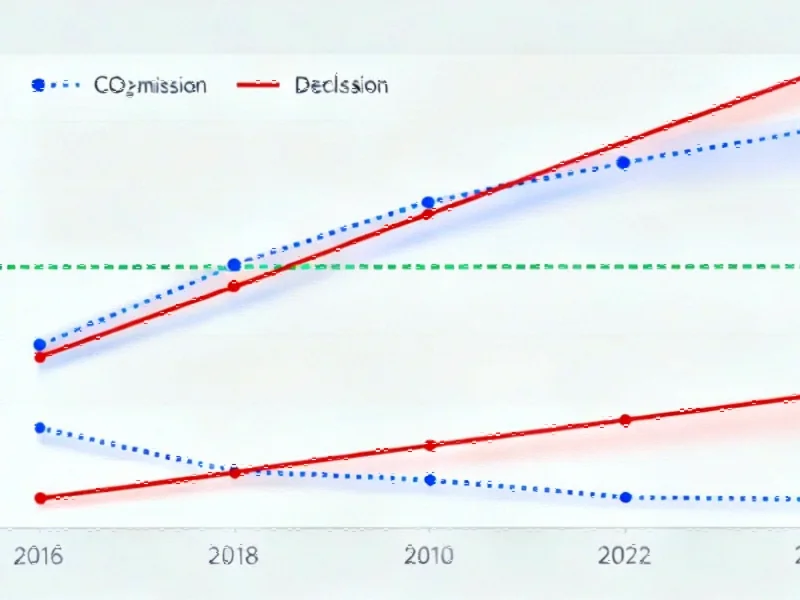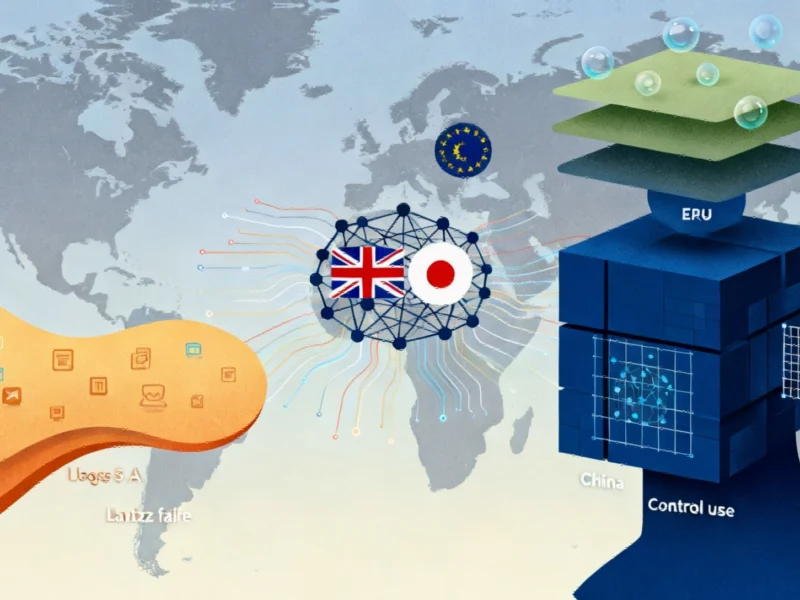The Growth Paradox: How Prosperity Is Undermining Climate Goals
New analysis covering the first nine years of the Paris Agreement reveals a troubling pattern: despite significant improvements in carbon efficiency across major economies, global carbon emissions have continued to rise. The comprehensive study, which extends methodology from previous assessments and incorporates data through 2024, demonstrates that rapid economic growth has effectively canceled out hard-won gains in emissions intensity reduction. This creates what researchers term a “super wicked problem” where the very economic prosperity sought by nations directly conflicts with climate objectives.
The data shows that while carbon intensity improved by an impressive 25% globally between 2015-2024, exceeding the median projection of 20%, this progress was overwhelmed by a 41% expansion in world GDP. The result was a net increase in emissions of 5.6% over the period, directly contradicting the 7% reduction targeted by initial Nationally Determined Contributions (NDC-1s). This dynamic illustrates the fundamental challenge facing climate policymakers worldwide as they attempt to reconcile economic and environmental priorities.
National Performance: A Tale of Three Economies
Examining individual country performances reveals both progress and persistent challenges. China exceeded its carbon intensity target with a 37% reduction but still saw emissions increase by 18% due to explosive economic growth. The United States approached its NDC-1 target with a 10% emissions reduction, significantly outperforming projections, while Germany achieved a remarkable 28% emissions decline, far exceeding its 9% target.
What’s particularly revealing is the absolute carbon intensity comparison between these leading economies. Germany maintained the lowest carbon intensity among the three, with the United States at approximately 50% higher and China at over three times Germany’s level. This disparity highlights the substantial opportunity for improvement in countries with higher carbon intensities, suggesting that global carbon reduction efforts could benefit from technology transfer and policy learning across national boundaries.
Improved Projections Amid Persistent Challenges
The additional years of data have substantially reduced uncertainty in future emissions projections. The very likely range for annual emissions in 2100 has narrowed dramatically from 56 gigatons to just 18 gigatons, representing a 75% decrease in uncertainty. This improved forecasting reflects both better data and the accelerated decline in carbon intensity observed since the Paris Agreement’s adoption.
Current projections now indicate a 64% decrease in annual emissions by 2100, a significant improvement over the 10% decline projected using data only through 2015. However, researchers caution that even with these improved prospects, achieving net-zero emissions this century appears unlikely based on current trends. The analysis of recent market trends suggests that economic factors continue to play a decisive role in emissions trajectories.
The Peak Emissions Question
One of the most critical uncertainties in climate modeling involves when global emissions will peak. The study identifies 2024 as the most likely peak year, but with only 22% probability, indicating substantial remaining uncertainty. The analysis suggests emissions are very likely to peak by 2045, though different research groups continue to offer widely varying predictions.
This uncertainty reflects the complex interplay between economic growth, technological innovation, and policy implementation. As countries navigate these competing priorities, industry developments in clean technology and energy efficiency will play an increasingly important role in determining when emissions ultimately begin their sustained decline.
Temperature Implications and Policy Scenarios
Despite the improved emissions outlook, the projected temperature increase by 2100 has only decreased modestly from 2.6°C to 2.4°C. This modest improvement reflects both the inertia of the climate system and the timing of projected emissions reductions, with the largest decreases occurring later in the century when they have less impact on cumulative emissions.
The study evaluates several policy scenarios, revealing that even if countries meet their current NDC targets and continue improvements at the same rate, the probability of staying below 2°C warming remains below 50%. This underscores the inadequacy of current commitments for meeting Paris Agreement goals. The research highlights how related innovations in climate modeling and data analysis are providing increasingly precise assessments of our climate future.
The Path Forward
The research clearly demonstrates that while significant progress has been made in reducing carbon intensity, this progress alone is insufficient to achieve climate targets. The fundamental tension between economic growth and emissions reduction must be addressed through more ambitious policies and accelerated technological deployment.
Notably, the reduced uncertainty in projections, particularly the substantial decrease in the risk of catastrophic warming above 3°C (from 26% to 9%), provides some encouraging news. However, the study emphasizes that current trajectories remain inadequate for meeting the Paris Agreement’s more ambitious goals. As recent technology breakthroughs continue to emerge, their rapid deployment will be essential for bridging the gap between current progress and necessary climate outcomes.
The analysis concludes that while the Paris Agreement has catalyzed important improvements in carbon efficiency, a fundamental recalibration of the relationship between economic activity and emissions is necessary to achieve climate stability. The coming years will be critical for determining whether global society can successfully navigate this complex challenge.
This article aggregates information from publicly available sources. All trademarks and copyrights belong to their respective owners.
Note: Featured image is for illustrative purposes only and does not represent any specific product, service, or entity mentioned in this article.



